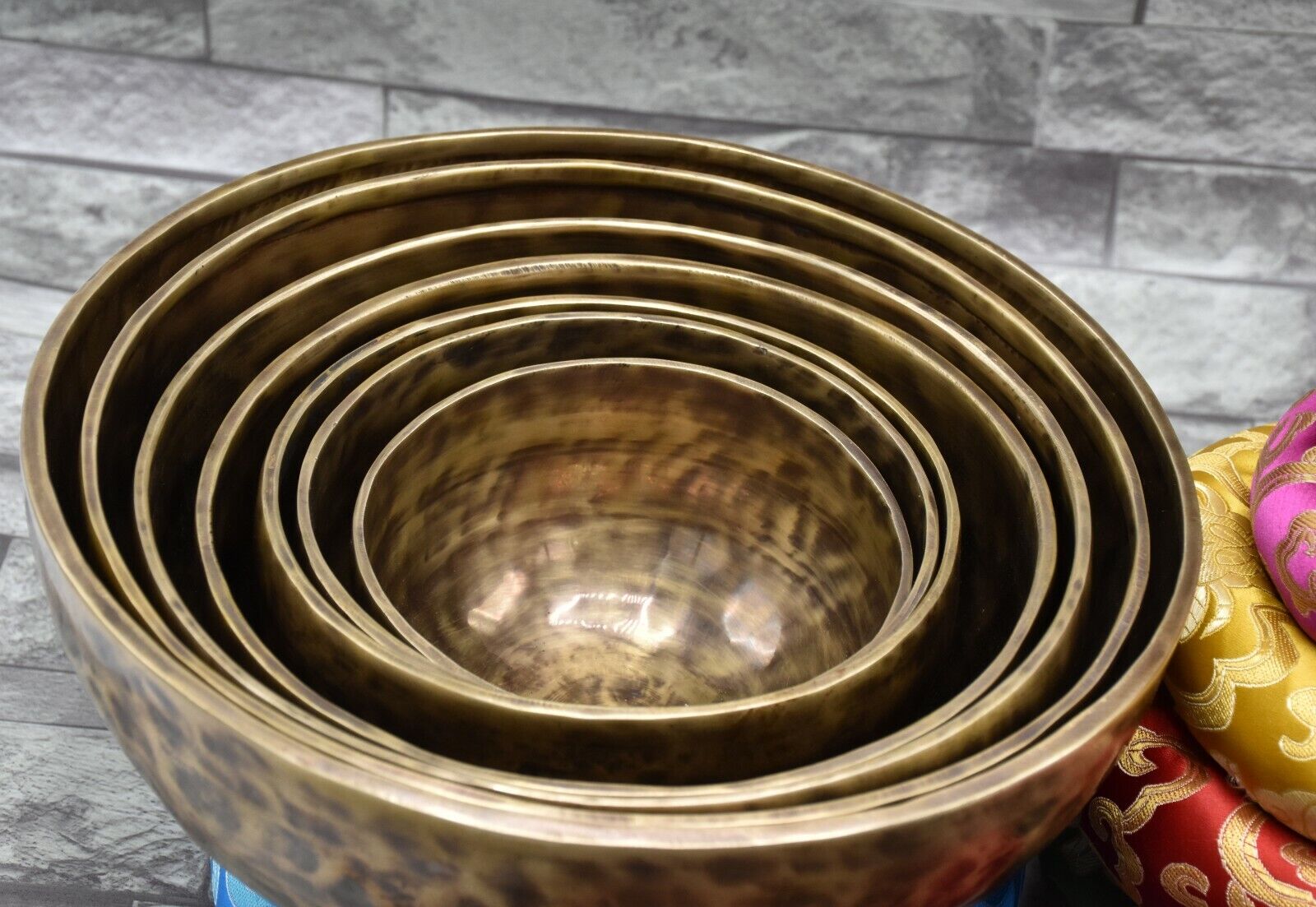-40%
Tibetan Meditation SINGING BOWL Harmonically-balanced, Buddhism, NEPAL 1 pc.
$ 79.2
- Description
- Size Guide
Description
OM MANE PEMBE HUM !!!!This is huge singing bowl. This Singing bowl is handmade in NEPAL by bronze alloy with good sound originates. The diameter o f the bowl is
45
centimeter, length of the top part is
14
centimeter and height is
7.5
centimeter. Its weight is
1.53 pound.
The package will include:
1) Singing bowl
2) Resting cushion
3) Wooden stick
***How To Play Tibetan Singing Bowls
The "Around-The-Rim" Technique
Hold the singing bowl on the palm of the left hand. For smaller bowls, seven inches and under, hold on your fingertips.
Grasp the mallet about mid-length, with all the fingertips pointing downwards and touching the wood. (If you are using one of our padded mallets, the red wool should be on top.) Palm downward.
Gently tap the mallet against the side of the bowl to "warm-up" the bell.
With an even pressure, rub the mallet clockwise around the outside edge of the rim of the bowl. Use a full arm movement, just like stirring a big kettle of soup, and keep the mallet straight up and down! Again, it's not a wrist movement, but a full-arm movement.
History of Singing Bowl from Wikipedia:
Singing bowls (also known as Tibetan Singing Bowls, rin gongs, Himalayan bowls or suzu gongs) are a type of bell, specifically classified as a standing bell. Rather than hanging inverted or attached to a handle, singing bowls sit with the bottom surface resting, and the rim vibrates to produce sound characterized by a fundamental frequency (first harmonic) and usually two audible harmonic overtones (second and third harmonic).[citation needed]
Singing bowls are used worldwide for meditation, music, relaxation, and personal well-being. Singing bowls were historically made throughout Asia, especially Nepal, China and Japan. They are closely related to decorative bells made along the Silk Road from the Near East to Western Asia. Today they are made in Nepal, India, Japan, China and Korea.
Origins, history and usage[edit]
In some Buddhist practices, singing bowls are used as a signal to begin and end periods of silent meditation. Some practitioners (for example, Chinese Buddhists) use the singing bowl to accompany the wooden fish during chanting, striking it when a particular phrase is chanted. In Japan and Vietnam, singing bowls are similarly used during chanting and may also mark the passage of time or signal a change in activity, for example changing from sitting to walking meditation. In Japan, singing bowls are used in traditional funeral rites and ancestor worship. Every Japanese temple holds a singing bowl.[citation needed] Singing bowls are found on altars and in meditation rooms worldwide.
There aren't any traditional texts about singing bowls so far as we know. All known references to them are strictly modern. However, a few pieces of art dating from several centuries ago depict singing bowls in detail, including Tibetan paintings and statues.[citation needed] Some Tibetan rinpoches and monks use singing bowls in monasteries and meditation centers today. Singing bowls from at least the 15th century are found in private collections.[citation needed] Bronze bells from Asia have been discovered as early as the 8th–10th century BC and singing bowls are thought to go back in the Himalayas to the 10th-12th century AD.[citation needed]
Singing bowls are played by striking the rim of the bowl with a padded mallet. They can also be played by the friction of rubbing a wood, plastic, or leather wrapped mallet around the rim of the bowl to emphasize the harmonic overtones and a continuous 'singing' sound.
Both antique and new bowls are widely used as an aid to meditation. They are also used in yoga, music therapy, sound healing, religious services, performance and for personal enjoyment.
Antique singing bowls[edit]
Antique Singing Bowls
Antique singing bowls produce harmonic overtones creating an effect that is unique to the instrument. The subtle yet complex multiple harmonic frequencies are a special quality caused by variations in the shape of the hand made singing bowls. They may display abstract decorations like lines, rings and circles engraved into the surface. Decoration may appear outside the rim, inside the bottom, around the top of the rim and sometimes on the outside bottom.
Modern development[edit]
Small singing bowl
Singing bowls are still manufactured today in the traditional way as well as with modern manufacturing techniques. New bowls may be plain or decorated. They sometimes feature religious iconography and spiritual motifs and symbols, such as the Tibetan mantra Om mani padme hum, images of Buddhas, and Ashtamangala (the eight auspicious Buddhist symbols).
New singing bowls are made in two processes. Hand hammering is the traditional method of creating singing bowls which is still used to make new bowls. The modern method is by sand casting and then machine lathing. Machine lathing can be done only with brass, so machine lathed singing bowls are made with modern techniques and modern brass alloy.

















